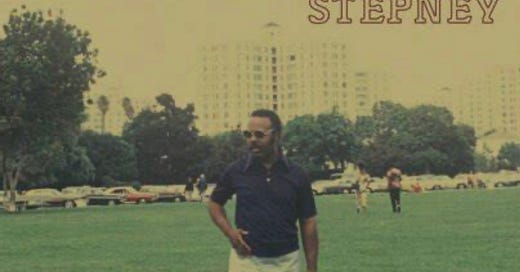Review & Appreciation of Charles Stepney: Step on Step
Charles Stepney, Step on Step (International Anthem, 2022).
By Ángel L. Martínez
In the early 1990s, I heard Spirit by Earth, Wind & Fire for the first time in its entirety, having only known before the staccato horns of “Getaway.” Digging into the credits and liner notes, I was amazed at the detail, especially all the orchestra players identified by name. I also read the album dedication to their producer, arranger, and conductor Charles Stepney. EWF’s deep love for their collaborator was deeply evident in the paragraph, matched only by their respect for his genius.
That was all I knew about Stepney until the late 2000s. Some research on Minnie Riperton led me on an ear-opening wiki walk into the universe of Rotary Connection and the man who was the mastermind of the ouvre of the art-soul band that launched Riperton into another instance of superb musicality gone too soon. With a taste for avant-garde anything in music, I self-immersed in Rotary Connection with increasing enthusiasm. And I understood more about Stepney’s being a guiding light for the band.
Now, listeners can gain more insight into the processes of Stepney in developing music. Step on Step, a collection of his home studio recordings is a chance to hear Stepney solo.His then-works-in-progress are now available widely thanks to the dedication and commitment of his three daughters and producers of the collection - Eibur, Charlene, and Chanté Stepney.
Bring front and center on the album cover photo, Charles Stepney striking a humble pose in the park mirrors the understatement of the music, laden with previously unheard depths. Keep in mind that, apart from the spoken interstitials from the producer sisters on the album, what you hear is all Stepney.
To hear the beginnings of tracks that developed into R&B musical exemplars is inspiring. “That’s The Way Of The World,” here as an embryonic sound journey before its form by EWF that still touches hearts today. “Black Gold” is the demo for Rotary Connection’s “I Am the Black Gold of the Sun.” It was released on their final album, Hey Love, and can be characterized as a, if not the, signature tune for the band. To hear what would become the song marked by its reverberating piano amid a nod to free jazz only enhances the sonic experience.
The inventiveness of Stepney is all over the album. “Daddy’s Diddies” showcases mouth trumpet as a pleasant counterpoint to the moog bass sounds. “Got to Dig It to Dig It” is a joyous jaunt, which preludes well to a later song, “Funky Sci Fi,” which lives up to the name. The swirling synths over a clave beat are equally at home amid space rock (think Hawkwind) and space jazz (think Sun Ra).
Step on Step represents Stepney’s broad range of musicality and ideas. Not only of genres in jazz and soul but as well of genre-busting concepts like lo-fi, ambient and electronic music, minimalism, and even musique concrète. (As to the latter, consider how, to more fully appreciate his style, the mini-tracks “Pointillism” and “Pump Effect” on Rotary Connection’s Dinner Music prefigured noise and industrial rock at the same time as The Velvet Underground.) Even to hear the Maestro’s voice in “Roll Tape” and “Surround Stereo” (listen to the latter on a good stereo system to fully feel the effect) is a heartwarming demonstration of why studio chatter is an ear-catching musical trope.
What emerges most of all collectively from this presentation is Stepney’s aesthetic and how it deeply informed his songwriting, production, arrangements, and performance. What you hear, down to the engineering, is him in a most intimate setting. Yet, much like dub would illustrate in the 1970s and after, what can be sensed from Step on Step is that his entire studio was an instrument in itself. It was a low-key laboratory of sonic palettes with various instruments in sync with each other when he needed them, and from which expressive symphonies were born.


